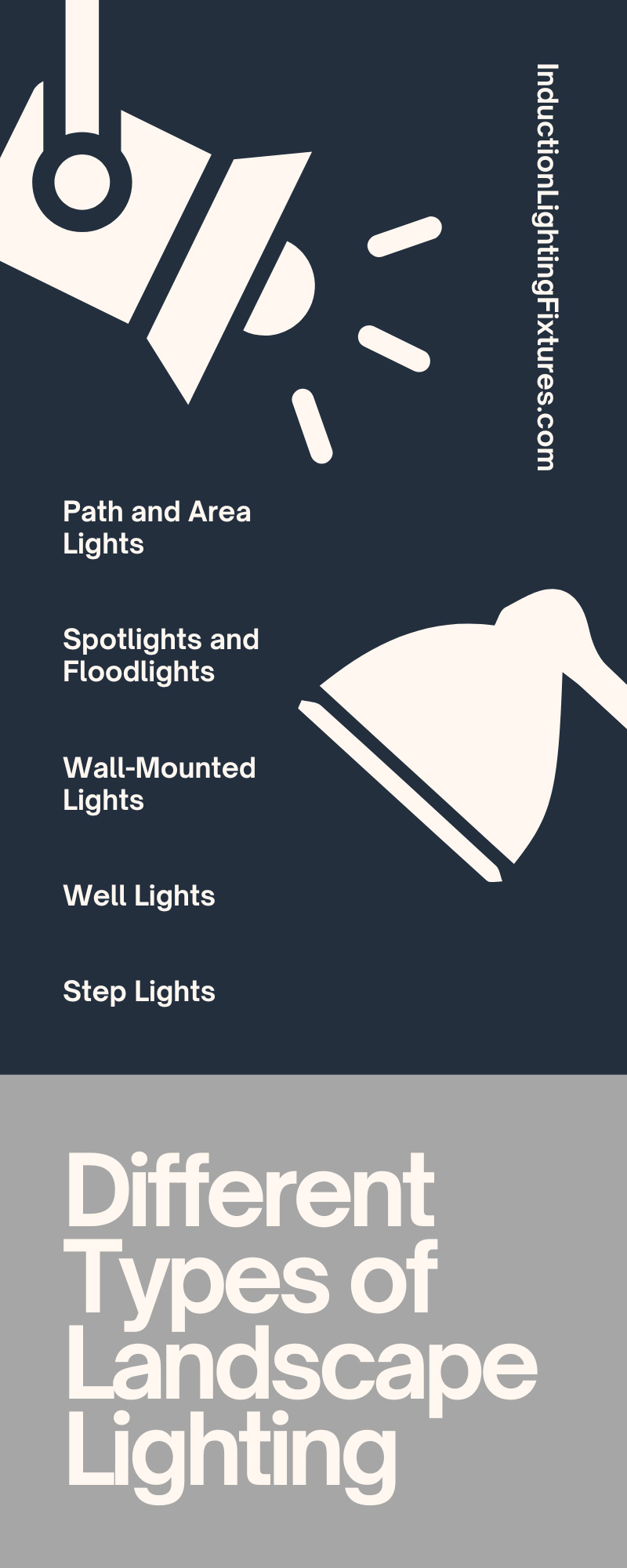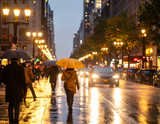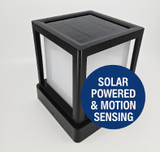All About the Different Types of Landscape Lighting
Trying to decide the best lighting for your outdoor areas can be tricky. Many businesses need to account for size, illumination, inner mechanics, and other essential features. There’s a lot to know about all the different types of landscape lighting and how to decide which models work best for you. Whether you run an office building, have a large landscape, or need to light up an entire stadium, here’s a helpful list of outdoor lighting options to help you get started.
Path and Area Lights
The primary purpose of path and area lights is to direct the light down toward the ground to illuminate paths and walkways. Many path lights are typically either tall pole-style lighting fixtures similar to smaller streetlights or more petite options that only go up a foot or so. No matter what style you choose, the idea is to light up the ground and help guide people down a walkway.
These lighting options are popular in parks, courtyards, or other areas with extended sidewalks that visitors and guests may need to navigate in the darker hours.
Spotlights and Floodlights
Spotlights and Floodlights are good lighting fixtures for using a larger quantity of bulbs and casting a wider, brighter, stronger beam of light onto a specific point. The primary differences between spotlights and floodlights are mainly in the width of their cone of light; floodlights typically cast a wider range, while spotlights focus more on a specific point.
Spotlights are typically great for highlighting or silhouetting a specific point or attraction. Floodlights are good for casting light over wider areas like parks or sports stadiums. While these two lighting options may appear similar, it’s a good idea to know what you need them for, so you can pick the light that works best for your establishment.
Wall-Mounted Lights
When learning all about the different types of landscape lighting, we recommend knowing about your wall-mounted options. Many wall-mounted lights point straight up or down, and the shape of the fixture creates an oval or cone wave of light.
Most wall-mounted lighting fixtures work in tandem with other lighting options to add supplemental lighting that offers a unique design and highlights the structure better than exterior-separated light fixtures.
One popular option for wall-mounted lights is a wall wash light, which is typically a long, horizontal light fixture that aims straight down. The shape of the wall wash light allows the lights to cover the wall more than the cone shape you may get with other wall-mounted fixtures.
Well Lights
Well lights typically serve a similar purpose to path or area lights in that they help illuminate areas where people may walk. However, these lighting fixtures go directly into the ground and shine upward. The lights are typically less powerful, as the beam only projects up a foot or so. As such, well lights work best for illuminating potential tripping hazards like the base of columns or raised median strips.
People may install well lights into the grass or onto more solid manufactured paths. When installing well lights in a grassy area, take special care to ensure they’re deep enough so that lawnmowers or other landscaping equipment can go over them without causing any unnecessary damage.
Step Lights
Steps lights have a lot in common with well lighting in the sense that they provide only a few inches of illumination and exist more to help guide people over potential obstacles—notably, the stairs. Steps typically have two main pieces: treads and risers. Treads are the flat parts of the steps where we place our feet, and risers are the vertical part that creates the height difference between the treads.
Most landscape lighting options illuminate the treads by placing lights on the risers that aim downward. Depending on the structure of the steps, others may use the side walls of the stairwell to light up the treads for design or in the event of stairs not having physical risers. Having well-illuminated steps is a vital safety feature and one you should not neglect in your establishment.
Consider the Light Color
Picking out the lights for your landscaping needs is about more than the positioning and type of fixtures. One other important factor to consider is the color of light. Light comes in different shades, typically ranging from a warmer yellow to a brighter, cooler white.
The color of light that you use plays a fundamental role in creating your atmosphere. A relaxing courtyard area may benefit from yellow path lighting with a lower Kelvin count. On the other hand, a larger field where you want a clear sense of illumination works better with high-Kelvin white floodlights.
Motion vs. Manual Lighting
Another thing to focus on when setting up lighting is whether you want to use manual lighting or motion-activated lighting. Both options have distinct advantages. Path lighting or step lighting generally works better manually since, by the time any motion turns it on, it may be too late. One option with manual lighting is to set them up on a timer to help cut down on human error when it comes to ensuring that the lights are on when they need to be.
Motion-activated spotlights or wall-mounted lights, on the other hand, are useful for security purposes and work as a visual alarm of sorts. They can also be useful for reducing energy costs, as the lights are only activated when in use.
Solar Lighting or Wired
One option growing in popularity for outdoor lighting fixtures is solar lighting in lieu of connecting the lights with wires. Solar lighting is good for the environment and typically requires less maintenance. The bulbs and batteries last for several years and activate automatically when they stop absorbing power for the day. Many companies are making the switch to greener lighting fixtures because they reduce the overall costs on the electric bill and create a more environmentally conscious public image. Wired options may be good as a backup but typically require more maintenance and may be more costly in the long run.
To learn more about landscape lighting fixture options such as modern solar post lights, Induction Lighting Fixtures has a wide range of bulbs and lighting options to suit your company’s needs. Please browse our indoor and outdoor light catalog or our helpful blog to learn more about professional lighting options. If you have any additional questions, comments, or concerns, contact us anytime, and a friendly specialist will be happy to assist you.

Recent Posts
-
How Long Will Solar Powered Lighting Operate in the Rain?
How Solar Light Fixtures Can Run for 10 Rainy Days If you’ve ever wondered how a Commercial solar li …Jul 30th 2025 -
Spotlight - The IL-SPG54 Smart Solar Walkway Light: Where Performance Meets Simplicity
Introducing the IL-SPG54 Smart Solar Walkway Light: Where Performance Meets Simplicity When it comes …Jun 16th 2025 -
Corn Bulb Sale - While supplies last!
⚡ Limited Time Sale – BLE Series Corn Lamps Starting at $24.99! Stock up now while supplies last – p …Jun 11th 2025






